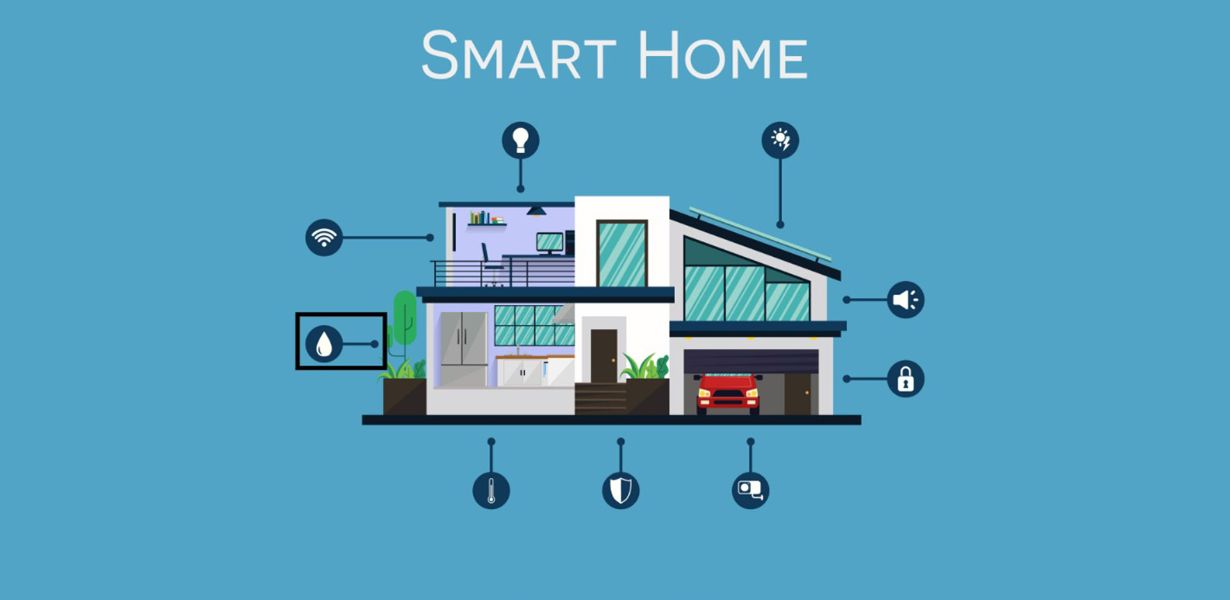
Neumorphism for the Home: Redefining Smart Home Devices with Sleek and Subtle Interfaces
- Post
- August 7, 2023
- Neumorphism, Web Design, Web Design Trends
- 0 Comments
In the ever-evolving landscape of smart home technology, neumorphism has emerged as a game-changer. Neumorphism, also known as “soft UI,” is a design trend that combines the elements of skeuomorphism and flat design, resulting in sleek, subtle, and visually appealing interfaces. In this blog, we delve into the world of neumorphism for the home, exploring its impact on smart home devices, and showcasing some inspiring examples. Let’s dive in!
Understanding Neumorphism: The Fusion of Classic and Modern Design
Neumorphism brings a fresh perspective to the user interface by blending the realism of skeuomorphism with the simplicity of flat design. This design philosophy introduces soft shadows and gradients to create buttons, switches, and other interactive elements that appear to be slightly raised from the background. The result is an interface that feels both tactile and visually engaging, enhancing the user experience in smart home devices.
Neumorphism’s Impact on Smart Home Devices
Enhanced User Experience
Neumorphism’s subtle 3D effects breathe life into smart home interfaces, making them more intuitive and user-friendly. The soft shadows help users identify interactive elements easily, improving the overall navigation and usability of smart home devices.
Aesthetics Meet Functionality
Gone are the days of dull and monotonous smart home interfaces. Neumorphism adds an aesthetic charm to the devices, elevating their appearance without compromising functionality. These sleek interfaces seamlessly blend with modern home décor, enhancing the overall ambiance.
Intuitive Controls and Feedback
Neumorphism empowers designers to create smart home interfaces with clear and intuitive controls. Users can now enjoy a seamless experience as they interact with their devices, receiving visual feedback on their actions, which fosters a sense of control and satisfaction.
Implementing Neumorphism in Smart Home Devices
To harness the true potential of neumorphism, designers and developers need to pay attention to certain key aspects:
Mindful Color Choices
Choosing the right color palette is crucial in neumorphism design. Subtle color variations between the background and interactive elements play a pivotal role in creating the desired depth and realism.
Balanced Shadows and Highlights
The success of neumorphism hinges on striking the perfect balance between shadows and highlights. Overdoing or underdoing these effects can lead to an unnatural and jarring interface.
Consistency Across Devices
Maintaining consistency across various smart home devices ensures a cohesive user experience. Consistent design elements foster familiarity and make it easier for users to adapt to new interfaces.
Inspiring Neumorphism Website Examples
Let’s take a look at some remarkable neumorphic website examples that demonstrate the versatility of this design trend:
Smart Home Hub: Seamless Control at Your Fingertips
This neumorphic smart home hub boasts a minimalist yet highly functional interface. Its soft and inviting buttons allow users to effortlessly control their smart devices with a single touch.
Ambient Lighting System: Elevating Home Aesthetics
The ambient lighting system showcases the elegance of neumorphism. Its gradual gradients and soft lighting controls add a touch of sophistication to any living space.
Commonly Asked Questions
Q1: Are neumorphic interfaces compatible with all smart home devices?
A: Yes, neumorphic interfaces are compatible with various smart home devices, regardless of their operating systems. Designers can adapt the neumorphic principles to create visually appealing interfaces for a wide range of products.
Q2: Can neumorphism improve the accessibility of smart home devices?
A: Absolutely! Neumorphism’s emphasis on clear visual cues and intuitive controls enhances the accessibility of smart home devices for all users, including those with disabilities.
Q3: Is neumorphism here to stay, or is it just a passing trend?
A: Neumorphism’s unique combination of aesthetics and functionality has garnered widespread praise. As it continues to evolve, it is likely to remain a prominent design trend in the smart home industry.
Q4: How can I incorporate neumorphism into my smart home app?
A: To implement neumorphism in your smart home app, consider working with experienced designers who understand the nuances of this design trend. They can ensure a seamless integration that aligns with your app’s objectives.
Q5: What are the benefits of neumorphism over traditional flat design?
A: Neumorphism offers a more engaging and visually appealing user interface compared to traditional flat design. It brings a sense of realism and depth while maintaining the simplicity and minimalism that users appreciate.
Final Words
In conclusion, neumorphism has revolutionized the smart home industry by introducing sleek and subtle interfaces that elevate the user experience. Its seamless fusion of classic and modern design elements has made smart home devices more intuitive, aesthetically pleasing, and accessible. Embracing neumorphism in smart home design will undoubtedly shape the future of home automation, bringing us closer to a world where technology blends effortlessly with our living spaces.




